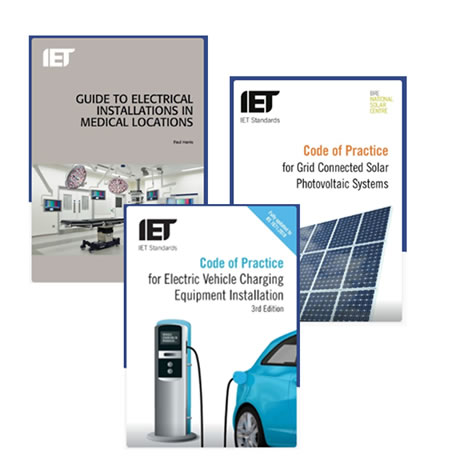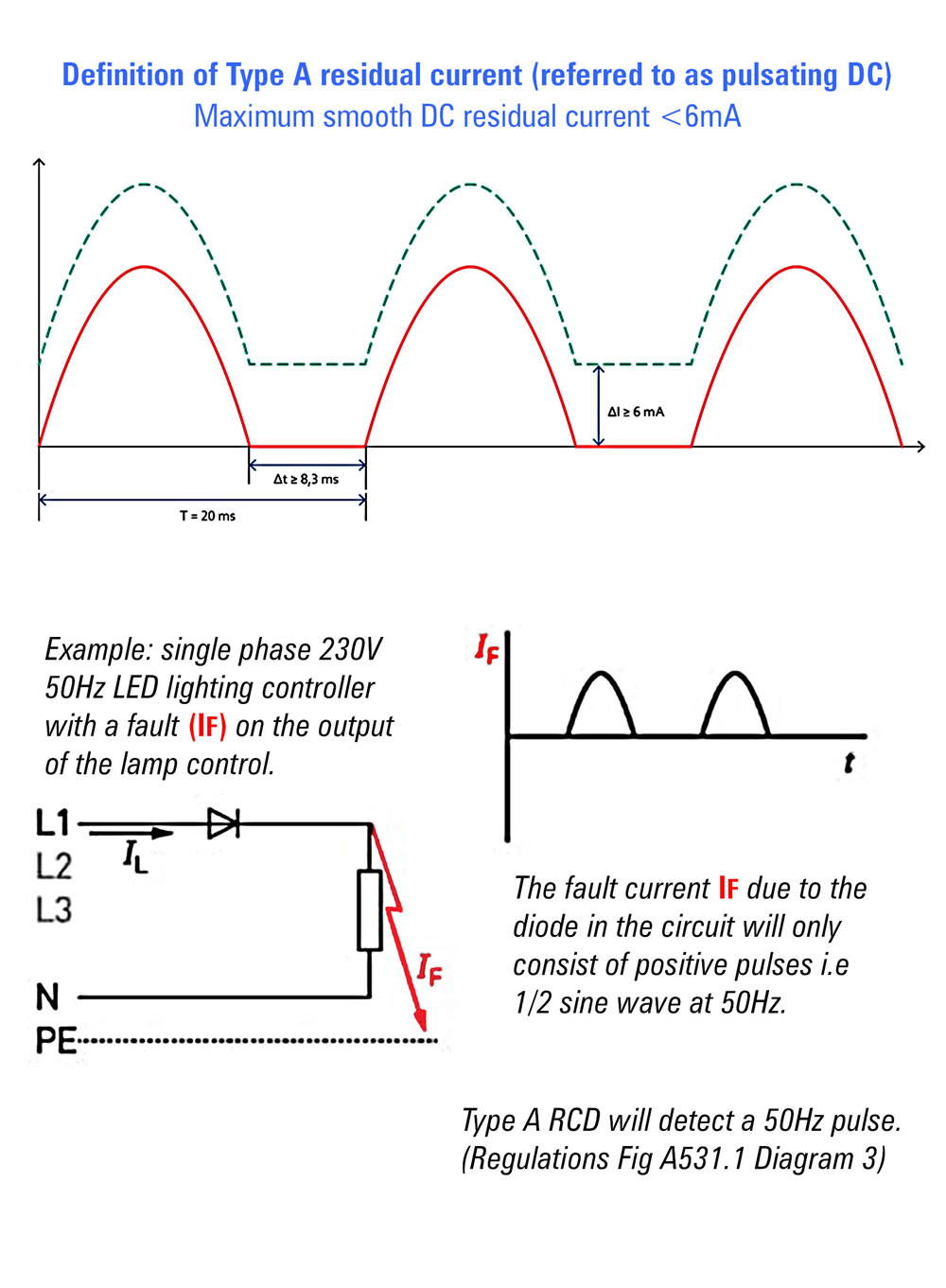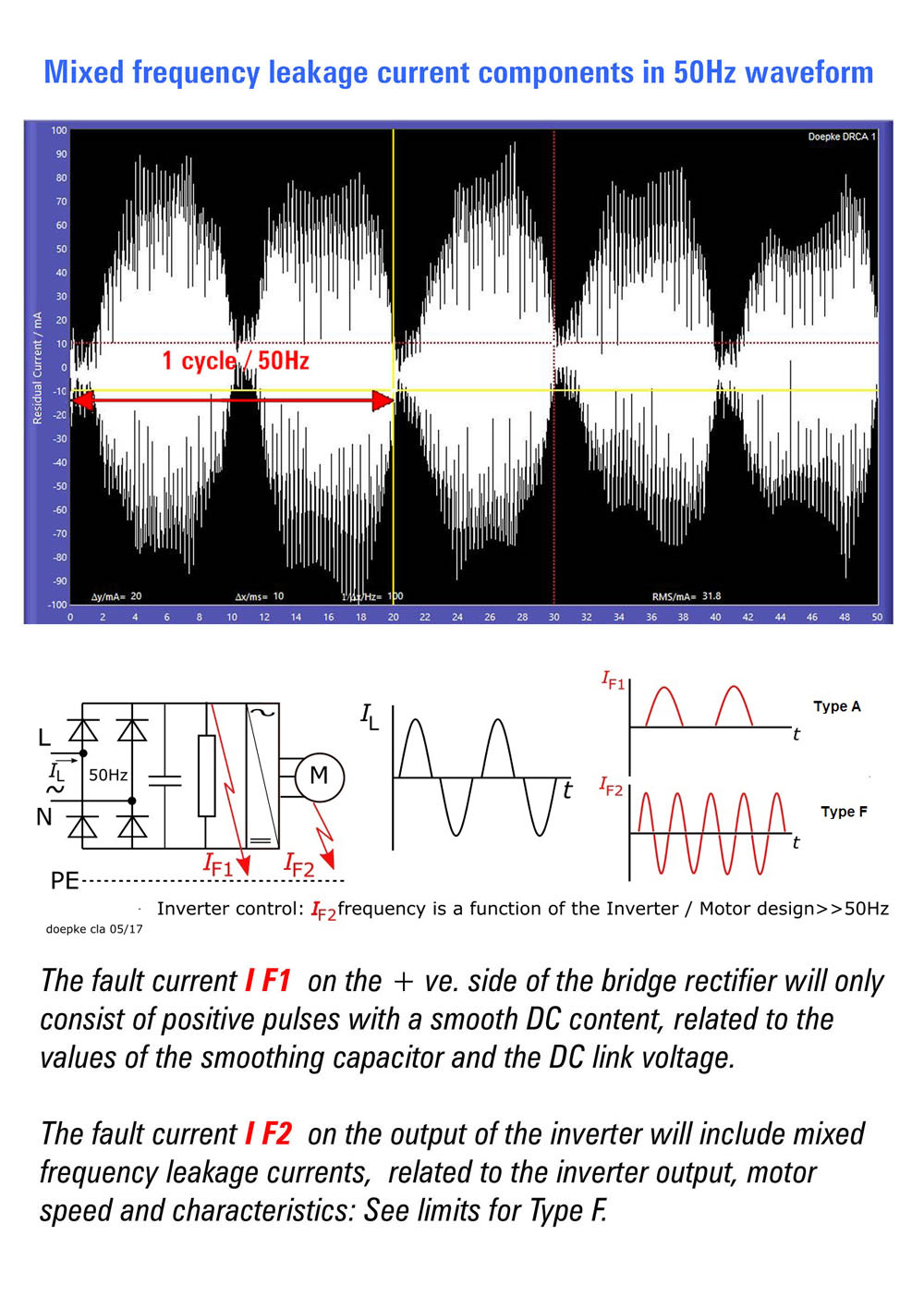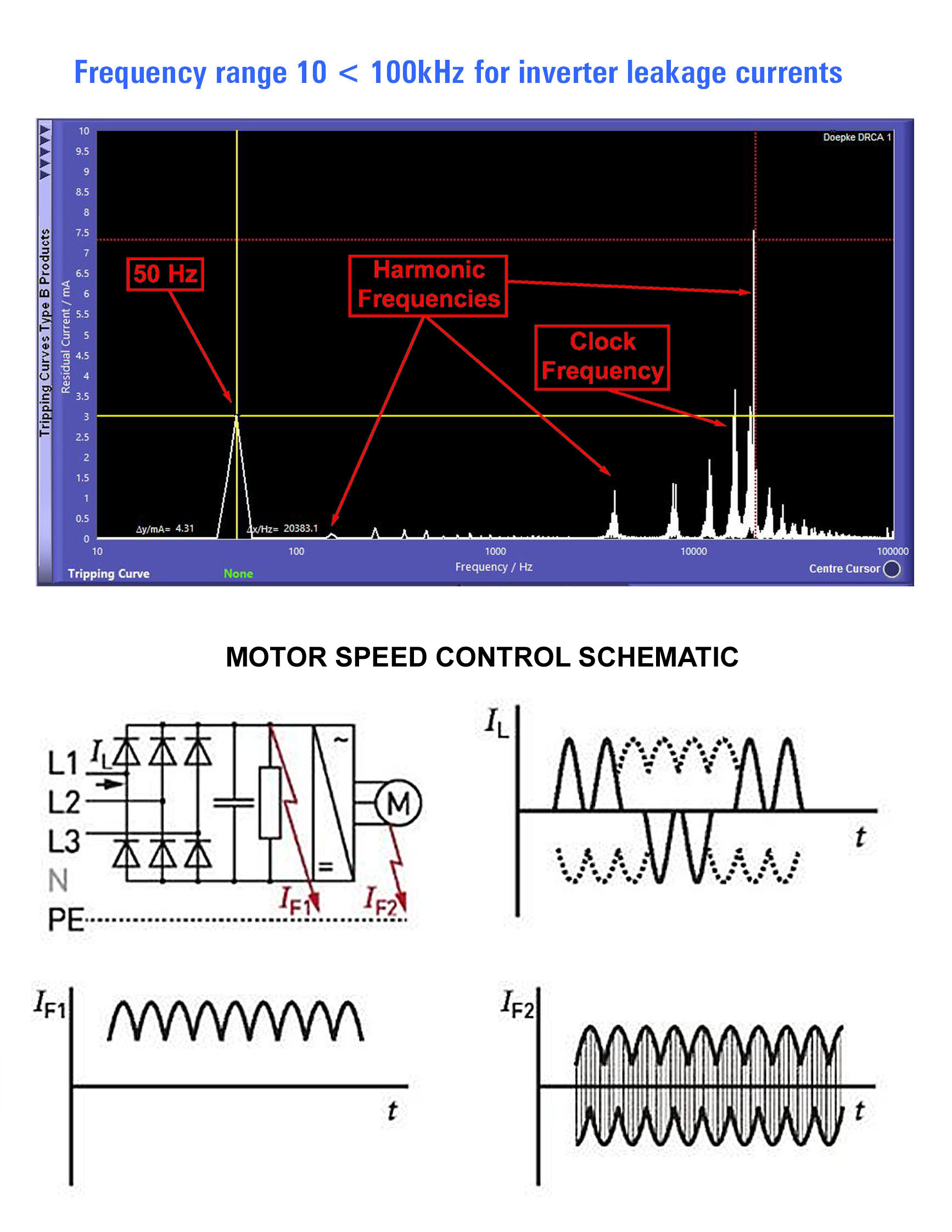RCD selection
Download a PDF of this page
RCDs
RCD is a generic term for devices that detect residual currents and disconnect the circuit if the residual currents exceeds a predetermined value.
The following RCD formats are defined in the IET Wiring Regulations (BS 7671):
- RCCB - Residual current (used with an MCB) Fixed characteristics - EN 61008
- RCBO - Residual current + Overcurrent. Fixed characteristics - EN 61009. RCCBs & RCBOs are designed for installations under the control of "Ordinary persons"*
- CBR - Residual current + Overcurrent. Adjustable characteristics - EN 947-2
- MRCD - Residual current detetction used in conjunction with an MCB/MCCB. Adjustable characteristics - EN 947-2.
CBRs and MRCDs are not suitable for use by "Ordinary persons" see BS7671 411.4.4 Note 2.
* IET definition: "Person who is neither a skilled person nor an instructed person".
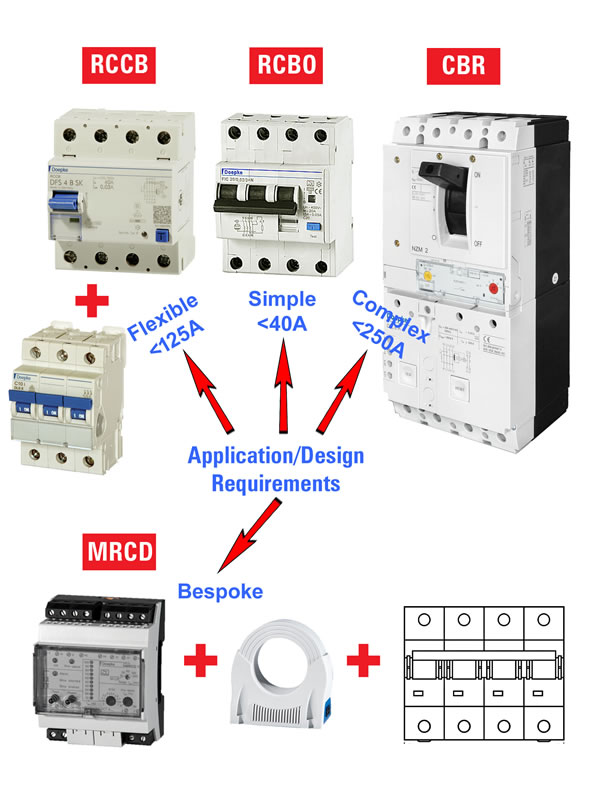
IET wiring regulations (BS7671)
Specify where and when RCDs must be used: Design, Selection, Erection & Verification e.g.
- Chapter 41 – Protection against Electric Shock.
- Chapter 52 – General requirements, Types of RCD, Fault, Additional & Fire protection with RCDs.
- Chapter 64 – Inspection and Testing.
- Part 7 – Covers special installations / locations including any specific requirements for RCDs e.g. 710 – Medical locations, 722 – EV installations.
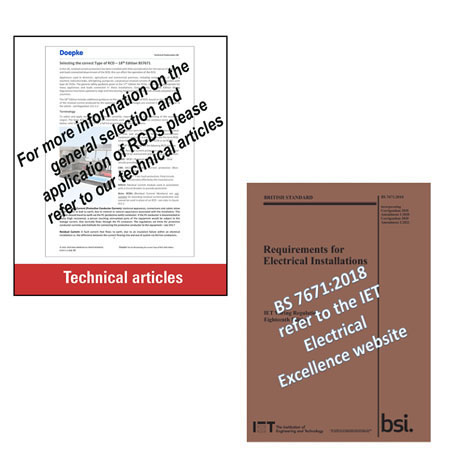
IET codes of practice
These provide additional guidance and advice for special locations / applications e.g. Medical Locations Groups 1 & 2 RCD requirements specified in BS7671 710.411.3.2.1
The IET Guide (Medical Locations) explains in detail what is required – see 18.3 and 20.2 and what should be considered i.e. approximately 30 references to the use of RCDs in the guide.
Types of RCD – BS7671 531.3.3
The type of RCD must be appropriate for the types of residual current that it will be exposed to during operation.
Different types of load and the location of the fault determine the characteristics of the residual current i.e. sinusoidal @50Hz, pulsed (1/2 wave @50Hz), pulsed 50Hz waveform superimposed on smooth DC content and high frequency components.
Using an RCD that is not appropriate for the application is dangerous and will result in the loss of protection – see General Regulations 531.3.3
Note: BS7671 2018 states that RCD Type AC shall only be used to serve fixed equipment, where it is known that the load current contains no DC components.
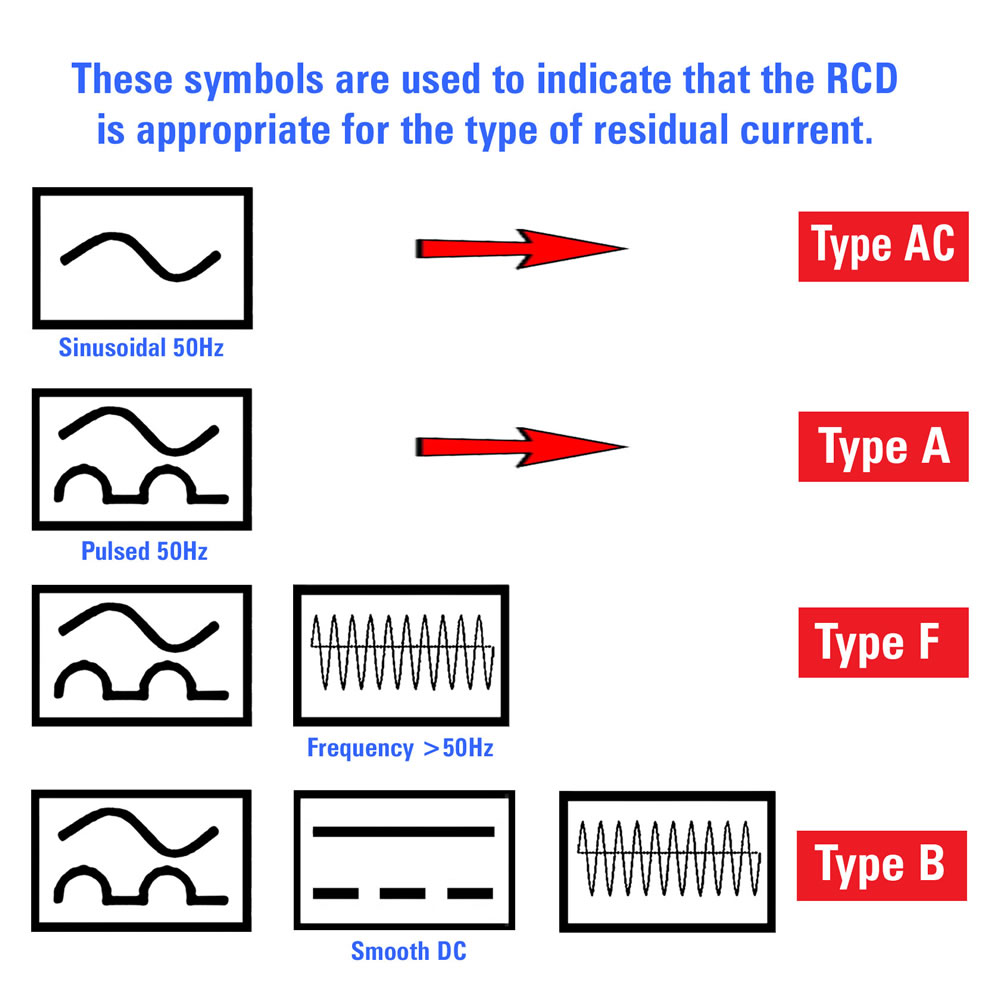
Type A residual current (Reg 531.3.3)
Single phase circuits supplying equipment containing semiconductors such as simple diodes, can generate pulsating DC (1/2 of the sine wave) - see example opposite.
Capacitors associated with the equipment, discharge as the voltage changes polarity, producing a smooth DC component.
The pulse is offset (superimposed) by the value of the DC component.
Type A RCDs provide protection for AC residual currents and pulsating DC currents superimposed on < 6mA smooth DC.*
The 6mA limit applies to all values of rated residual operating current for Type A RCDs.
*Note: Type A RCDs do not detect smooth DC. Therefore they cannot be used if there is a risk of the smooth DC component exceeding 6mA.
Type F residual current – Reg 531.3.3 (iii)
Single phase circuits supplying frequency inverters for speed control in power tools, heat pumps, HVAC, Compressors and other domestic appliances, produce mixed frequency leakage currents that cannot be reliably detected by A or AC RCDs.
The schematic opposite is representative of a modern domestic energy saving washing machine using digital inverter technology.
The location of the fault and the characteristics of the appliance, determine the characteristics of residual current under fault conditions.
The limits of Type F RCDs:
1 F1 smooth content < 10 mA
1 F2 frequency of components < 1 kHz
If the characteristics of the equipment exceed the above limits – use Doepke Type B RCDs.
Type B residual current – Reg 531.3.3 (iv)*
Three phase circuits supplying any equipment that contains frequency inverters without galvanic isolation (isolating transformers*). Inverter based equipment produces leakage current at 50 Hz and at the switching frequency (clock frequency) of the inverter, plus any associated harmonic frequencies.
Type B RCDs detect the sum of the leakage currents, consequently the leakage currents across the RCD frequency spectrum must be taken into account, when selecting the RCD sensitivity – See Techpub17 for a detailed explanation.
The schematic opposite is representative of a 6 pulse inverter controlling the speed of a 3 phase motor. The load current (IL) is non-linear i.e. the current drawn from the supply is not sinusoidal. Non-linear loads produce harmonic currents which have an impact on the installation – see Reg 314.1 (iv) & 331.1 (vi).
The location of the fault will determine the characteristics of residual current under fault conditions.
The fault current I F1 in the above schematic at the output of the bridge rectifier (DC Link) consists of pulses generated by each phase with no off period. see smooth DC Reg. 531.3.3 (iv) (e).
The fault current I F2 on the output of the invertor will include mixed frequency leakage currents, related to the EMC filter, invertor switching frequency, motor speed and cable installation characteristics.
This results in a complex waveform consisting of the motor output e.g. 10Hz, the inverter clock frequency e.g. 8 kHz, Inverter harmonics e.g. 16, 24, 32…kHz, 150 Hz component from the 6 pulse bridge rectifier. The length of the cable between the inverter and the motor has a significant impact on the leakage current. The EMC filter must be matched to the inverter set-up. The natural frequency of the filter must not be a multiple of the inverter clock frequency. Incorrect matching of the filter could result in leakage / residual currents circulating within the filter and motor circuit and not passing through the upstream RCD – refer to the inverter manufacturers installation instructions for design requirements.
Note: Isolating transformers can be used to prevent smooth DC currents flowing in the circuit. The RCD must still be suitable for any high frequency components.
Type B Tripping Characteristics
Doepke offer 3 Type B characteristics:
BSK, BNK and N + (B + VDE / Germany only)
Link to Type B Characteristics Curves
Selection of the characteristic (BNK or BSK) and sensitivity must be compatible with the characteristics of the equipment must be compatible with the characteristics of the equipment for safety, protection amd reliable operation of equipment - see Reg 132.1, 133.4
BNK < 300 mA applicable for Reg 531.3.5
Inverter equipment must be compatible with Reg 531.3.2 and 531.3.5 to use the BNK version.
Some points to consider regarding the selection of the RCD in conjunction with the complete design of the installation:*
1.Characteristics of the equipment to be connected in the
ii circuit, below the RCD e.g.
- Equipment Selection – see Reg 133 / 134
- Equipment characteristics – see Reg 331 / 334
- Unwanted tripping – see Reg 531.3.2
- Equipment Manufacturers’ recommendations
2. Location / Ambient conditions e.g.
- Special conditions – see Regs Section 7
- Environmental conditions – see Reg 132.5
3. Protection for safety e.g.
- Fault protection – see Reg 411.1
- Additional protection – see Reg 415.1
- Fire Protection – see Reg 422.3.9
4. Cable installation / connection method e.g.
- Cable installed in a wall – see Reg 533.6.201
- Connection / Earthing – see Reg 543.7
5. Maintenance / Inspection - see Reg 341
*The skilled person responsible for the design must have the appropriate knowledge, experience and familiarity with all of the requirements of the Regulations, Codes of Practice and the Application. Testing Equipment / Leakage current analysis: Suitable for the frequency range and level of leakage currents associated with the equipment under test.
See Techpub 11 (Earth leakage and residual current analysis.)
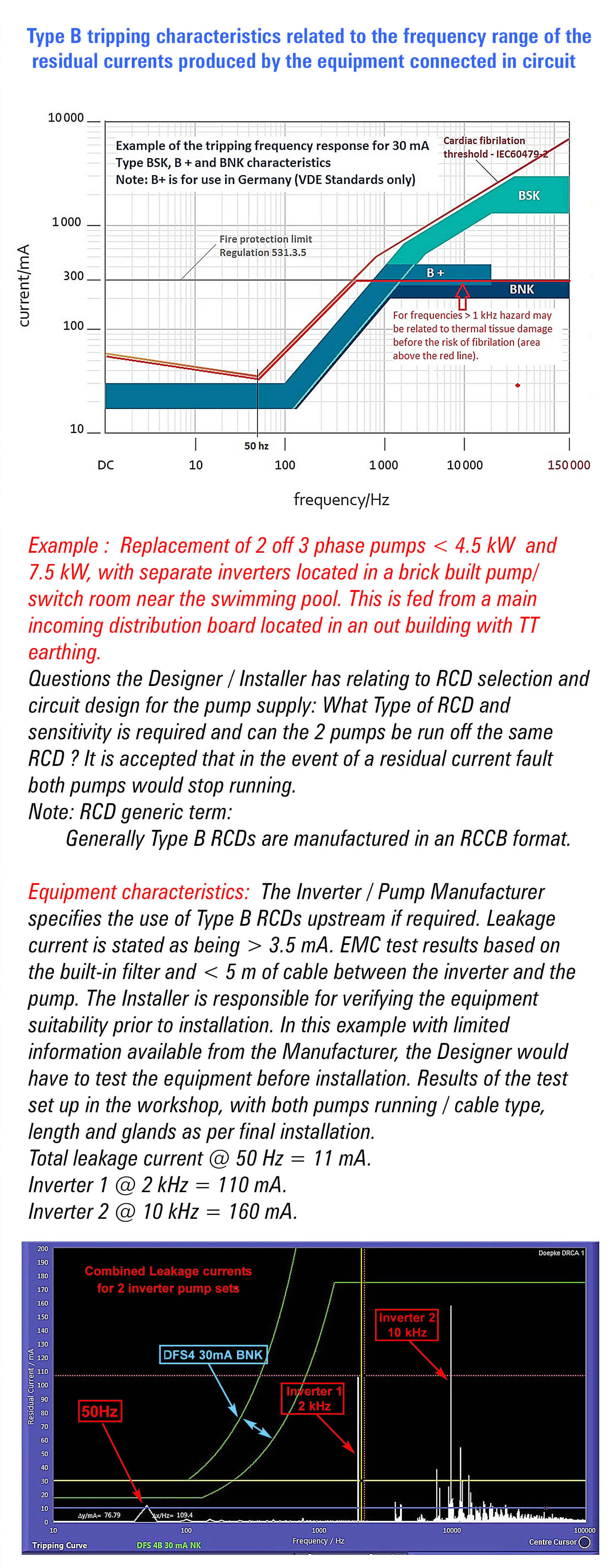
Click here to download Techpub 22 (Pumps, Water and RCDs ?)

